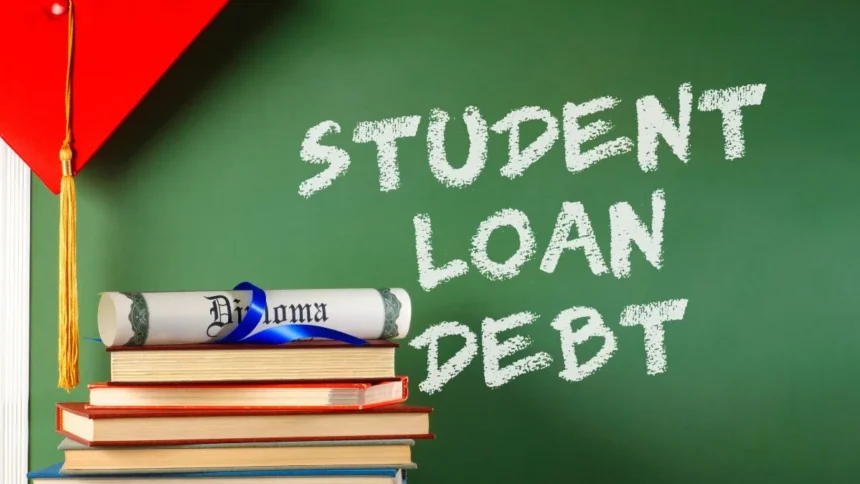Student loan forgiveness is a significant policy that offers millions of borrowers a chance to alleviate their debt burden. As the cost of education continues to rise, student loans have become an inescapable reality for many. In the U.S. alone, the total student loan debt exceeds $1.7 trillion, affecting over 45 million borrowers. Amidst these growing concerns, student loan forgiveness programs have emerged as a potential lifeline, providing hope and financial relief to those struggling to pay off their loans.
Understanding Student Loan Forgiveness
Student loan forgiveness refers to the cancellation or reduction of a borrower’s remaining student loan debt. While various programs exist, they all share the common goal of providing relief to borrowers, particularly those who face significant financial hardship or who work in certain qualifying professions.
There are several well-known student loan forgiveness programs, including:
- Public Service Loan Forgiveness (PSLF): The PSLF program is designed for borrowers employed in public service sectors such as government, education, and non-profit organizations. After making 120 qualifying monthly payments under a qualifying repayment plan, borrowers may have their loans forgiven.
- Teacher Loan Forgiveness: This program targets teachers who work in low-income schools. Teachers may qualify for up to $17,500 in loan forgiveness after five consecutive years of service in a qualifying school.
- Income-Driven Repayment (IDR) Forgiveness: Borrowers enrolled in income-driven repayment plans (such as PAYE, REPAYE, or IBR) can have their remaining loan balance forgiven after 20 or 25 years of qualifying payments.
- Military Service Loan Forgiveness: Military personnel may qualify for various loan forgiveness benefits based on their service commitments, including the potential cancellation of some or all of their student loan debt.
The Power of Student Loan Forgiveness
The power of student loan forgiveness lies in its ability to provide a fresh start for borrowers who are struggling to repay their loans. For many, the burden of student loan debt is overwhelming, and the prospect of forgiveness can significantly reduce financial stress. By eliminating or reducing debt, borrowers may experience improved financial stability, increased disposable income, and the ability to invest in their future, whether through buying a home, starting a business, or saving for retirement.
Moreover, student loan forgiveness programs aim to support public servants and essential workers. Teachers, social workers, first responders, and healthcare professionals often dedicate their careers to serving others, and these programs provide an opportunity to recognize and reward their contributions to society.
The Impact on Borrowers
Student loan forgiveness can have a profound impact on borrowers, particularly those who are struggling with high-interest rates and long repayment terms. For example, without forgiveness, a borrower with $50,000 in student loans at an interest rate of 6% could end up paying nearly double that amount over the course of a 20-year loan.
Loan forgiveness reduces the financial burden on borrowers, allowing them to focus on other aspects of their lives, such as building a career or saving for their future. This debt relief is especially important for individuals from low-income backgrounds who may struggle to pay off loans while supporting their families.
The impact of student loan forgiveness also extends to the economy. By reducing individual debt levels, forgiveness frees up financial resources that can be spent on goods, services, and investments, thereby stimulating economic growth. Additionally, it helps reduce the wealth gap, particularly among minority communities, who are disproportionately impacted by student loan debt.
The Challenges of Student Loan Forgiveness
While the idea of student loan forgiveness is appealing, there are challenges to its implementation. One of the primary obstacles is the eligibility criteria, which can be complex and confusing. Borrowers often struggle to navigate the requirements of different forgiveness programs, leading to frustration and disillusionment.
Furthermore, there is ongoing debate about the fairness and sustainability of forgiveness programs. Critics argue that student loan forgiveness disproportionately benefits higher-income earners, especially those with graduate or professional degrees. Others question whether the government should bear the financial cost of forgiving billions in student loans.
Despite these challenges, the Biden administration has taken steps to expand and simplify student loan forgiveness, including the implementation of the one-time student debt relief program and changes to the Public Service Loan Forgiveness program.
How to Qualify for Student Loan Forgiveness
The first step in qualifying for student loan forgiveness is determining eligibility. This involves understanding the specific program requirements, including employment status, income level, and repayment plan.
For instance, under the PSLF program, borrowers must work for a qualifying employer (such as a government agency or non-profit organization) and make 120 qualifying payments while enrolled in a qualifying repayment plan. The Teacher Loan Forgiveness program, on the other hand, requires teachers to work in a low-income school for five consecutive years.
Borrowers must also ensure that they are enrolled in the appropriate repayment plan. For most forgiveness programs, an income-driven repayment plan is required to qualify. These plans base monthly payments on a borrower’s income and family size, making them more affordable for those with lower incomes.
The Future of Student Loan Forgiveness
As the nation continues to grapple with the student loan crisis, the future of student loan forgiveness remains uncertain. While some lawmakers advocate for sweeping reforms, such as broad student loan forgiveness for all borrowers, others argue for a more targeted approach.
Ultimately, the success of student loan forgiveness programs will depend on the ability to balance financial sustainability with providing meaningful relief to borrowers. As more people struggle with the burden of student loan debt, it is crucial that policymakers continue to explore ways to improve and expand forgiveness options.
Conclusion
Student loan forgiveness offers a critical lifeline for millions of borrowers, providing them with the opportunity to break free from the weight of student debt. With various programs available, borrowers can find relief and focus on building a better future. While challenges remain, student loan forgiveness remains a powerful tool for individuals, families, and the economy, making it a crucial part of the ongoing conversation about education and financial responsibility in the U.S.
Get more info: https://www.timelinetale.com/






